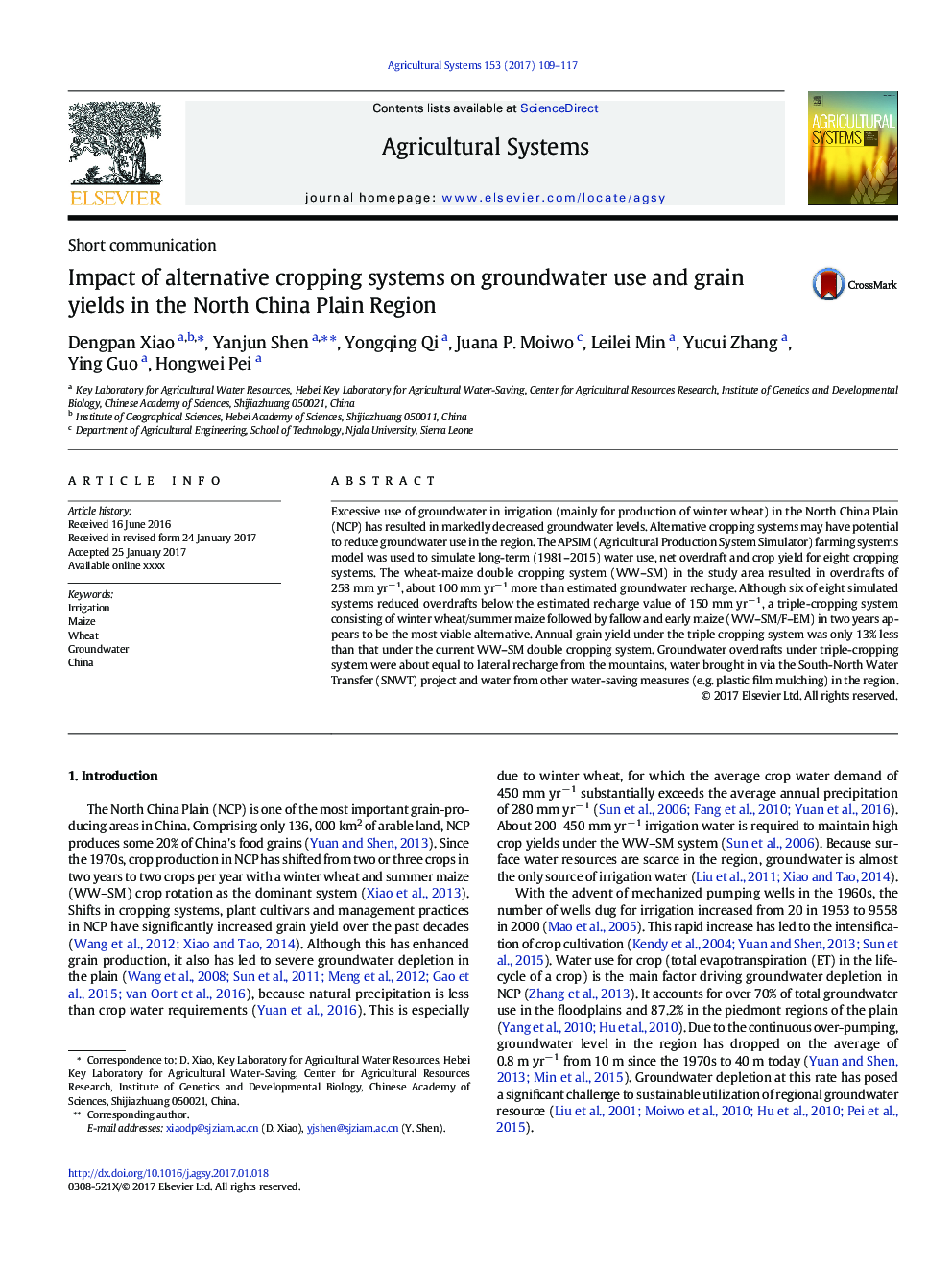| Article ID | Journal | Published Year | Pages | File Type |
|---|---|---|---|---|
| 5759748 | Agricultural Systems | 2017 | 9 Pages |
Abstract
Excessive use of groundwater in irrigation (mainly for production of winter wheat) in the North China Plain (NCP) has resulted in markedly decreased groundwater levels. Alternative cropping systems may have potential to reduce groundwater use in the region. The APSIM (Agricultural Production System Simulator) farming systems model was used to simulate long-term (1981-2015) water use, net overdraft and crop yield for eight cropping systems. The wheat-maize double cropping system (WW-SM) in the study area resulted in overdrafts of 258 mm yrâ 1, about 100 mm yrâ 1 more than estimated groundwater recharge. Although six of eight simulated systems reduced overdrafts below the estimated recharge value of 150 mm yrâ 1, a triple-cropping system consisting of winter wheat/summer maize followed by fallow and early maize (WW-SM/F-EM) in two years appears to be the most viable alternative. Annual grain yield under the triple cropping system was only 13% less than that under the current WW-SM double cropping system. Groundwater overdrafts under triple-cropping system were about equal to lateral recharge from the mountains, water brought in via the South-North Water Transfer (SNWT) project and water from other water-saving measures (e.g. plastic film mulching) in the region.
Keywords
Related Topics
Life Sciences
Agricultural and Biological Sciences
Agricultural and Biological Sciences (General)
Authors
Dengpan Xiao, Yanjun Shen, Yongqing Qi, Juana P. Moiwo, Leilei Min, Yucui Zhang, Ying Guo, Hongwei Pei,
